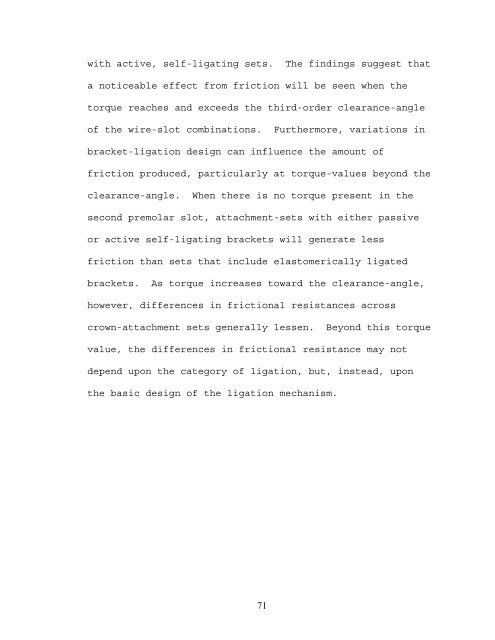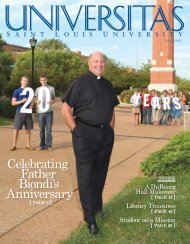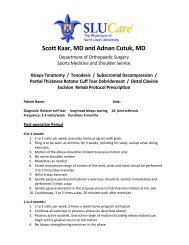The effects of third-order torque and self - Saint Louis University
The effects of third-order torque and self - Saint Louis University
The effects of third-order torque and self - Saint Louis University
Create successful ePaper yourself
Turn your PDF publications into a flip-book with our unique Google optimized e-Paper software.
with active, <strong>self</strong>-ligating sets. <strong>The</strong> findings suggest that<br />
a noticeable effect from friction will be seen when the<br />
<strong>torque</strong> reaches <strong>and</strong> exceeds the <strong>third</strong>-<strong>order</strong> clearance-angle<br />
<strong>of</strong> the wire-slot combinations. Furthermore, variations in<br />
bracket-ligation design can influence the amount <strong>of</strong><br />
friction produced, particularly at <strong>torque</strong>-values beyond the<br />
clearance-angle. When there is no <strong>torque</strong> present in the<br />
second premolar slot, attachment-sets with either passive<br />
or active <strong>self</strong>-ligating brackets will generate less<br />
friction than sets that include elastomerically ligated<br />
brackets. As <strong>torque</strong> increases toward the clearance-angle,<br />
however, differences in frictional resistances across<br />
crown-attachment sets generally lessen. Beyond this <strong>torque</strong><br />
value, the differences in frictional resistance may not<br />
depend upon the category <strong>of</strong> ligation, but, instead, upon<br />
the basic design <strong>of</strong> the ligation mechanism.<br />
71
















